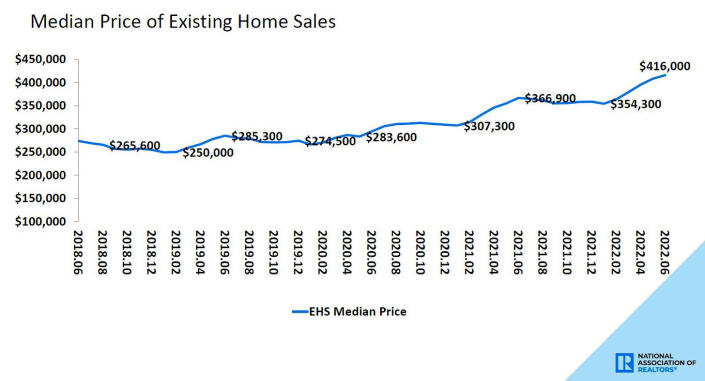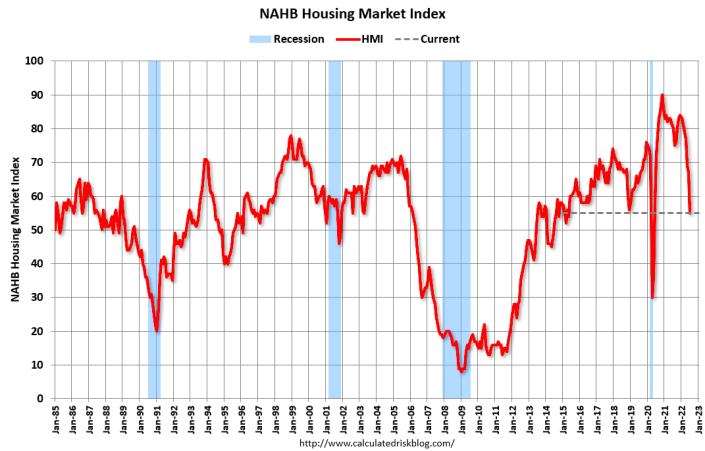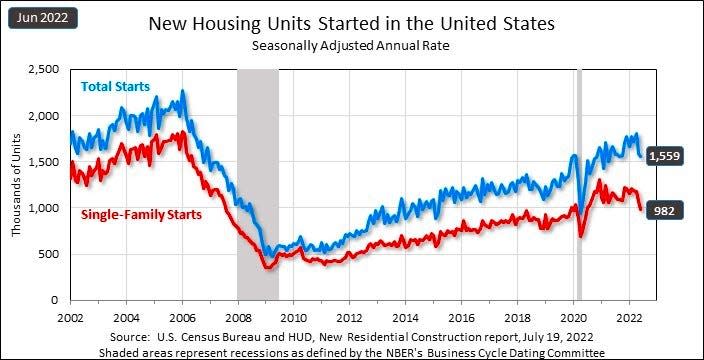Low financing costs, excess savings, and a demand for more space during the pandemic fueled a frenzy in the housing market that sent home prices surging.
Homebuyers, however, are now confronting an increasingly unaffordable housing market that’s been plagued by shortages.
And with the Federal Reserve forcing financing costs higher in recent months, housing market activity has cooled off considerably.
“Housing is likely just at the beginning of recession,“ Tom Porcelli, chief U.S. economist at RBC Capital Market, wrote on Monday. “Of course, a large amount of activity was pulled forward during the pandemic and then you layer on top of that the sharp rise in rates (monthly mortgage payments up about +60% over the last year) and housing was sure to fall hard.“
Last week came with a flood of housing market data, and none of it looked good for those in the market.
For starters, affordability is a big problem.
According to Zillow’s monthly housing market report released Tuesday, the monthly mortgage payment on the average U.S. home was $1,613 in June, up 4.5% from a month ago and 62.2% from a year ago.

Again, you can thank cash-flush consumers for helping to fuel a housing market boom that caused home prices to surge over the past two years.
More recently, you have a Fed that’s been tightening financial conditions, which has come with surging mortgage rates. This has made affordability worse.
According to Freddie Mac data, the average rate for the 30-year fixed rate mortgage was 5.54% as of July 21. Mortgage rates have surged to levels last seen in December 2008.

High home prices and high mortgage rates have turned off potential home buyers.
According to the Mortgage Bankers Association (MBA), mortgage purchase and refinance application activity last week fell to its lowest level in 22 years. Bill McBride, author of Calculated Risk, charted the slowdown:

“Purchase activity declined for both conventional and government loans, as the weakening economic outlook, high inflation, and persistent affordability challenges are impacting buyer demand,” the MBA’s Joel Kan said on Wednesday.
This is all reflected in the declining number of homes being sold.
Sales of previously-owned homes fell 5.4% in June to an annualized rate of 5.12 million units, according to the National Association of Realtors (NAR). It was a 14.2% drop from a year ago.

“Both mortgage rates and home prices have risen too sharply in a short span of time,” NAR chief economist Lawrence Yun said on Wednesday.
Indeed, the price of the average existing home sold was a record $416,000 in June, up 13.4% from a year ago.

Part of what’s going on in housing is limited supply. But are builders clamoring to take advantage of high selling prices? No.
“Production bottlenecks, rising home building costs and high inflation are causing many builders to halt construction because the cost of land, construction and financing exceeds the market value of the home,” Jerry Konter, Chairman of the National Association of Home Builders (NAHB), said on Monday.
According to NAHB data released Monday, home builder sentiment plunged in July to its lowest level since May 2020.

“Apart from April 2020, this was the largest one-month decline in the 37 year history of the series,” UBS economist Sam Coffin observed. “The housing market index had been trending down gradually since the start of the year, but now, its decline is steeper than at the equivalent time seven months into the housing crisis. In short, it suggests significant further deterioration in homebuilding.“
Home construction data confirm the depressed sentiment.
According to Census Bureau data released Tuesday, home construction starts fell to an annualized rate of 1.559 million units in June, down 2.0% from a month ago and down 6.3% from a year ago.

By most measures, housing market activity is cooling and looks ripe to cool further as long as affordability problems persist.
That said, we may soon see prices broadly move lower sooner than later as more and more sellers are finding that they’re listing their homes for too high a price.
“On average, 7.3% of homes for sale each week had a price drop, a record high as far back as the data goes, through the beginning of 2015,” Redfin analyst Tim Ellis wrote.

All that said, what we’re witnessing in the housing market is the desired outcome of the Fed, which continues to use tighter financial conditions — including rising mortgage rates — to cool economic activity in its effort to bring down inflation.

